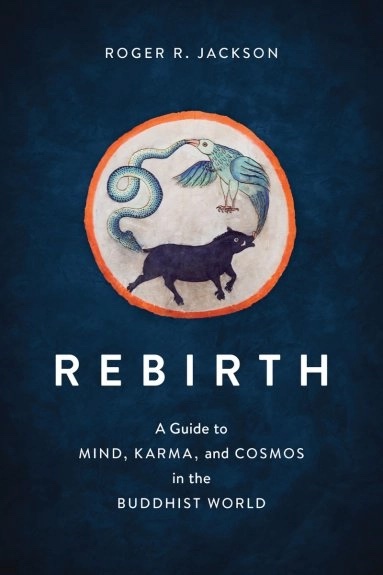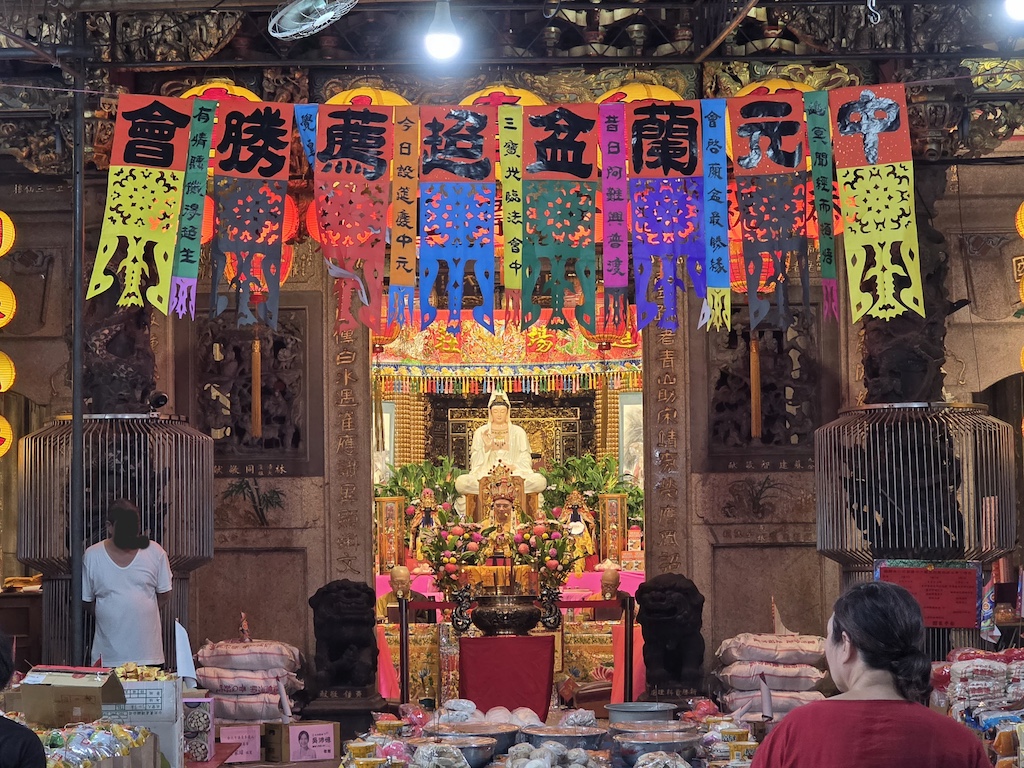In China, as in every other Asian culture to which Buddhism was introduced, the karmic eschatology developed in India was an essential part of the intellectual framework provided by proponents of the Dharma. Unlike in Sri Lanka and other adoption cultures, however, Buddhists arriving in China encountered long-established ideas and practices surrounding death and the afterlife. As Stephen Teiser notes, “Before the growth of Buddhism and the development of organized Taoism, Chinese belief maintained a relatively fluid boundary between this life and the next. Human existence was viewed as a temporary conglomeration of the two dominant forces in the universe, yin and yang”—which were roughly equivalent to the ideas of matter and spirit, or body and soul, respectively. At death, it was assumed, the lighter yang forces tended upward and the darker yin forces downward. In more immediate terms, “once they have died, people are found in or near their graves, visiting ancestral halls and family banquets, and lodged in specific sites like…the Yellow Springs.” In this same period, adds Teiser:
“[A] passion for immortality is also evident…ranging from the prolongation of life on earth to the search for an unending existence in heaven, various western paradises, or the islands of the east. Another important feature of the otherworld was that it was… organized along bureaucratic lines. Officers administered the empire of the dead, keeping records on every human being and taking charge of the spirit after death.”
Such a vision of the afterlife is broadly consonant with those found in many cultures, including that of Buddhist India, where a notion of postmortem reward or punishment for deeds performed in our earthly life provides some way of understanding what lies beyond the grave and why we end up where we do—whether temporarily or for eternity.
Thus, notes Teiser, when Buddhist cosmology and eschatology were introduced to China, they did not seek to supplant indigenous ideas so much as to supplement them, for “both indigenous Chinese and imported Buddhist conceptions viewed selfhood as a fluid process,” not requiring a creator god or a fixed, eternal soul. Also, to an originally fluid and multi-local vision of the afterlife, Buddhism added one more option: that the person could be reborn in another bodily form. [Similarly,] Buddhist notions of karma refined and completed a system of judgment after death that had been in place for centuries.
With the arrival of Buddhism came detailed and sophisticated Indian teachings about samsara, karma, and rebirth, and these certainly were accepted—if not always understood—by both monastic and lay Buddhists. Further, because they were not completely at odds with pre-Buddhist Chinese eschatology, they made an impression in Confucian and, even more so, Daoist circles. Buddhists, however, made their own adjustments. They often incorporated indigenous deities into their pantheon, and adapted their ritual practices to preexisting Chinese models. Within the general framework of their karmic eschatology, they adapted the Chinese vision of a bureaucratized afterlife, which eventually was enshrined in a short late-first-millennium apocryphal sutra known as the Scripture on the Ten Kings (Shiwangjing). This text describes a postmortem “purgatory” presided over by ten officials, most of whose names are Chinese rather Indian in origin. These officials are responsible for meting out karmically appropriate rewards and punishments to the souls of the departed in the intermediate period between death and rebirth—which in this case lasts not for seven weeks but for three years. Typically, the souls are brought in for a “hearing” in the court of each of the ten kings, where they must defend their conduct. Bewildered as they are by the proceedings, souls often are represented by an advocate, the compassionate bodhisattva Ksitigarbha (C. Dizang; Jp. Jizo), who is reputed to have vowed in a previous life “to deliver all sentient beings from suffering, especially those trapped in the lower regions of rebirth.” Unsurprisingly, prayers to Ksitigarbha and offerings to the ten kings feature prominently in the ritual portions of the Scripture on the Ten Kings; these prayers and offerings might be made before one’s own death or, afterward, by one’s relatives, so as to assure that when, at the end of three years, one receives one’s next rebirth assignment, it is a heavenly one.
Of even greater eschatological significance in the Chinese Buddhist world are the texts and practices surrounding what generally is called the “ghost festival,” which is held around the full moon of the seventh lunar month (typically in August), a moment that marks the end of the traditional rainy-season retreat undertaken by monks and nuns. It is reputed that on this occasion the gates of all the realms of rebirth are thrown open, and the departed are able to return to earth to visit their living relatives, who offer them incense; a banquet with empty seats for the visitors; material goods, including “spirit money,” which is ritually burned; and, at the festival’s end, paper boats bearing candles to light their way back to the afterlife.
Although the deceased inhabiting any realm of samsara are welcomed and feted, there is a particular focus on those spirits that have been consigned to the hungry ghost and hell realms. This is explained by the mythology underlying the festival, found in several Indic and Chinese sources. The most important is the Ullambana Sutra (C. Yulanpenjing), an Indian Mahayana text that tells of the heroic, but unsuccessful, attempt by the Buddha’s disciple Maudgalyayana to rescue his mother from rebirth in the hungry ghost realm, and the compensatory practice he is taught by the Buddha: making food offerings at the end of the summer retreat to the sangha, who then transfer the merit to his mother, freeing her. Similar tales are found in the Sanskrit Avadanasataka, where Maudgalyayana instructs laypeople to practice as the Buddha had instructed him; the Pali Petavatthu, which recounts Sariputra’s failed attempt to release his mother from a hungry ghost existence, and his ultimate success in doing so when he offers a feast to the monastic community and then transfers the merit to his mother; and a Chinese esoteric text in which Ananda is visited by a terrifying hungry ghost who predicts the great disciple’s own imminent death and rebirth as a preta, unless he makes appropriate offerings to all ghosts everywhere—which Ananda is able to do when the Buddha teaches him a series of powerful preta-feeding mantras. As in India and Sri Lanka, these rituals for the departed play on the tension between, on the one hand, the removal from our purview of deceased loved ones, based on the seemingly iron-clad dictates of karmic law; and, on the other, the all-too-human need to retain some sense of communion with the departed—and to believe, as well, that karmic results can be mitigated through ritual, magic, or some form of divine intervention.
◆

From Rebirth © 2022 by Roger R. Jackson. Reprinted in arrangement with Shambhala Publications, Inc. Boulder, CO. www.shambhala.com.
Thank you for subscribing to Tricycle! As a nonprofit, we depend on readers like you to keep Buddhist teachings and practices widely available.
